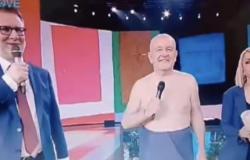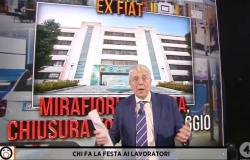
Anna Maria Maiolino was born on May 20, 1942 in Scalea, Italy, and then emigrated with his family to Caracas, Venezuela in 1954, a few years after the Second World War. There he studied at the Escuela de Artes Visuales Cristóbal Rojas, between 1958 and 1960, the year in which he moved to Rio de Janeiro, Brazil, where he attended the free courses in painting, sculpture and woodcut at the Escola Nacional de Belas Artes. She goes on to dedicate herself to this technique which allows her to connect with the popular woodcut practiced in north-eastern Brazil; she will use it for several years precisely because it is imbued with social criticism.
The artist declares himself self-taught. Through frequenting the Escola de Belas Artes and the artists of Rio, Maiolino became part of the well-known Brazilian artistic movement called Nova Figuração, a reaction to the abstraction of the Sixties contaminated by pop inflections, which also reflected the harsh political climate of the country during the first years of the military dictatorship (1964-1985). In that period Maiolino continued to develop his own language and skills, attending the famous art courses held by Ivan Serpa (1923-1973) at the Museu de Arte Moderna do Rio de Janeiro. In 1964 she held her first solo exhibition at Galeria G in Caracas and in 1967 she participated in the historic Nova Objetividade Brasileira exhibition in Rio de Janeiro. Between 1968 and 1971 Maiolino lived in New York. In the last year, on the recommendation of Luis Camnitzer, she received a scholarship at The Pratt Graphics Center and practiced the technique of metal engraving and etching, broadening her artistic horizons to various media and experimental poetry. Her paintings and engravings from the 1960s are quite radical, combining pop imagery with the typical Nova Figuração repertoire, focusing on political characters and narratives, as well as personal, bodily and family references.
Between the Seventies and Eighties Maiolino began to dedicate himself to performance art and, in 1981, he staged his surprising Entrevidas, in which dozens of eggs are scattered on the floor and challenge the artist to travel through the space as if it were a “field undermined”, taking into account the fragility and precariousness of the egg, symbol of life itself. At the beginning of the nineties he began working with clay, signaling a new attention to gestural and sensorial expression, the handmade and the relationship with the earth, clay, elementary materials in sculptures and reliefs that endure until today.
For the 60th International Art Exhibition of the Venice Biennale Maiolino will present a new large-scale work that continues and develops the series of clay sculptures and installations. This will be his first participation in the Biennale Arte.
Over the course of her career, Anna Maria Maiolino has held numerous major and retrospective exhibitions, including those at the Instituto Tomie Ohtake in Sao Paulo (2022), at the PAC Padiglione d’Arte Contemporanea in Milan, at the Whitechapel Art Gallery in London ( 2019), at the Museum of Contemporary Art in Los Angeles (2017), at the Fundació Antoni Tàpies in Barcelona (2010) and at the Drawing Center in New York (2002). He participated, among other things, in the Lyon Biennial (2017), the Gwangju Biennial (2014), the Sao Paulo Biennial (2010, 1998, 1991, 1994, 1967), the Sydney Biennial (2008) and the Havana Biennial (1984). His works are present in the collections of the Castello di Rivoli (Turin), the National Gallery of Modern Art in Rome, the Museum of Modern Art in Bologna, the Museum of Modern Art in New York, the Museum of Contemporary Art in Los Angeles , of the Museu de Arte de São Paulo Assis Chateaubriand, of the Museu de Arte Moderna do Rio de Janeiro, of the Tate in the United Kingdom.
Tags: Biennale Arte Anna Maria Maiolino Nil Yalter Golden Lions Lifetime Achievement Biennale Arte





